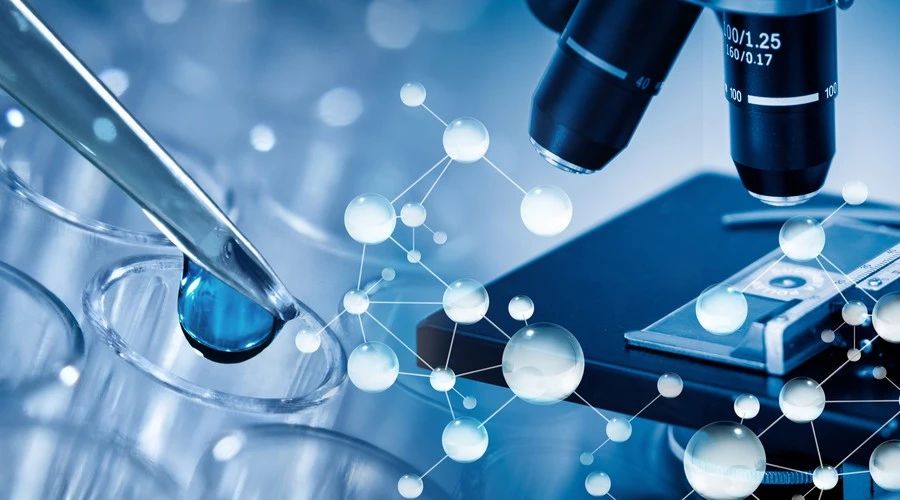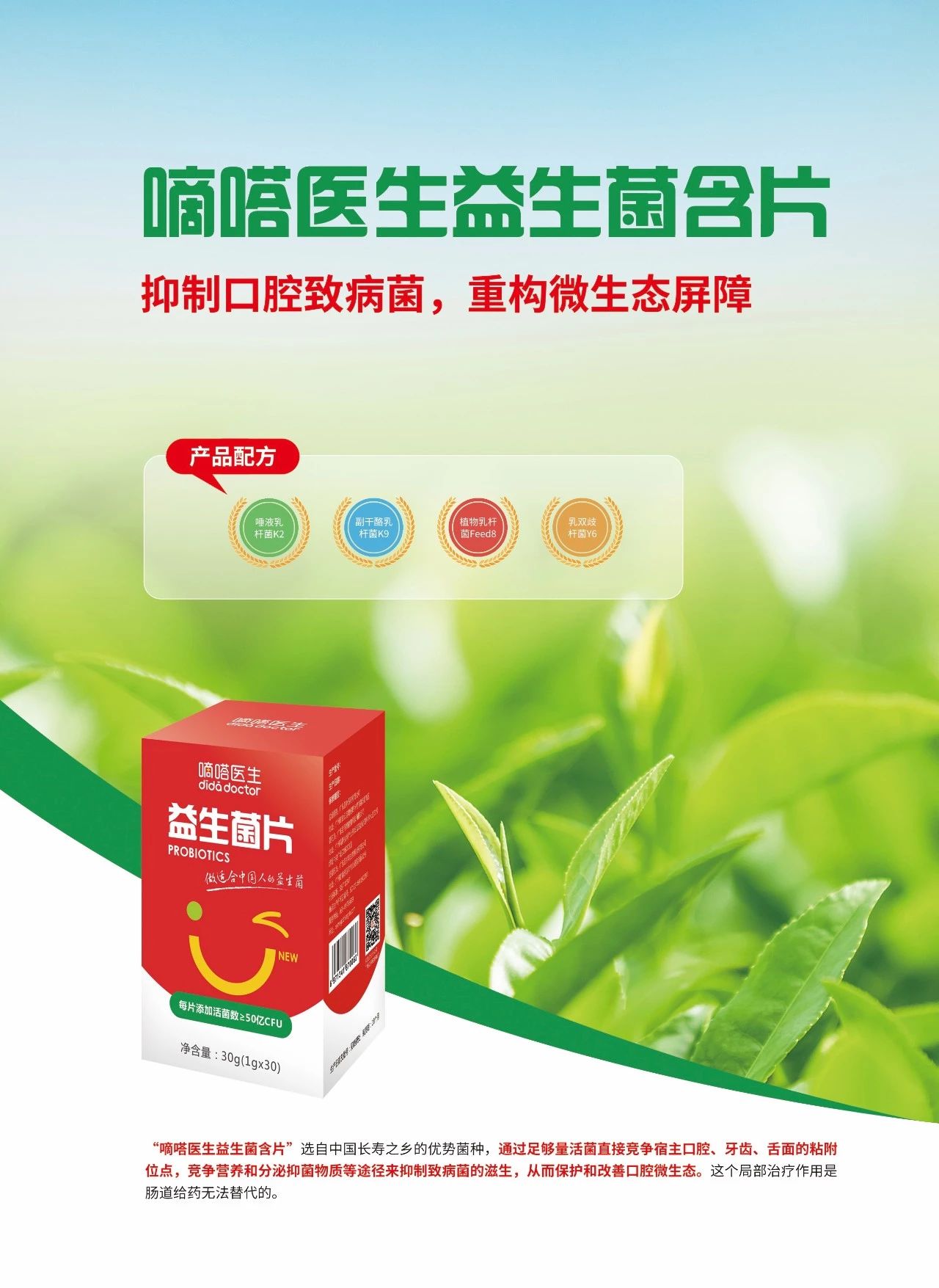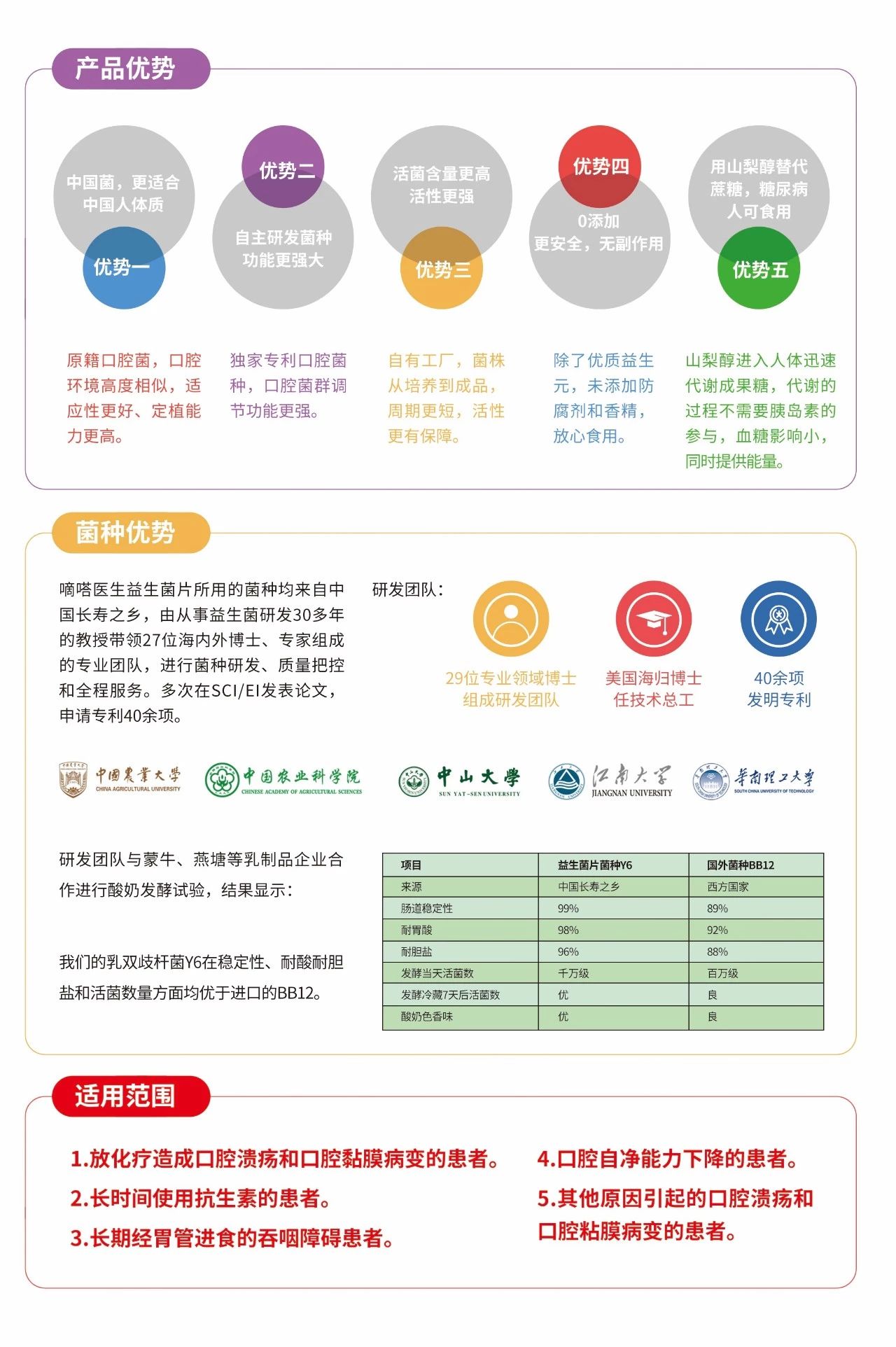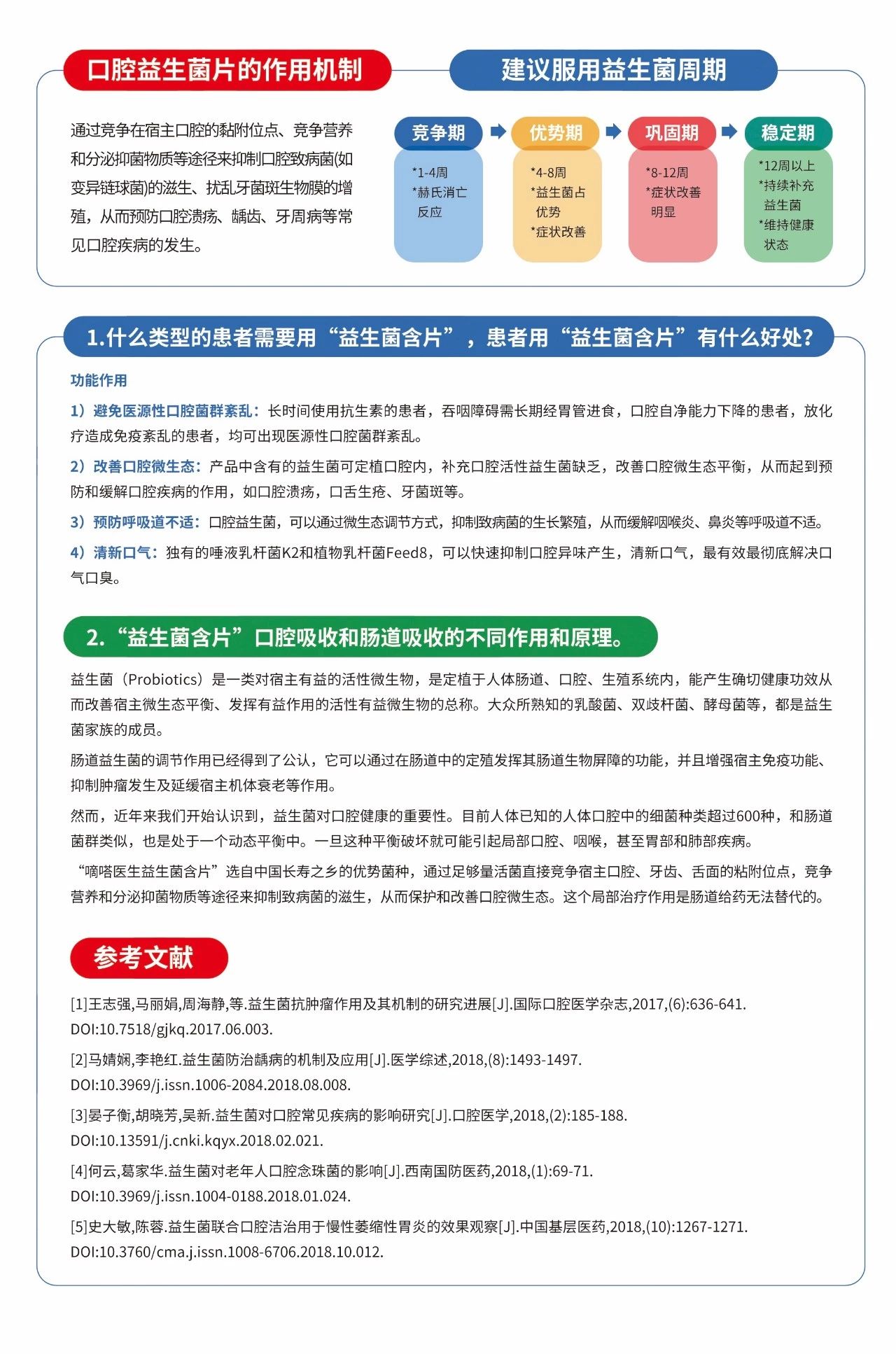《益生菌抗肿瘤作用及其机制的研究进展》|国际口腔医学杂志, 2017,44(6): 636-641.

引用本文
王志强, 马丽娟, 周海静, 杨兰, 聂红兵, 薛龙. 益生菌抗肿瘤作用及其机制的研究进展[J]. 国际口腔医学杂志, 2017,44(6): 636-641.
Wang Zhiqiang, Ma Lijuan, Zhou Haijing, Yang Lan, Nie Hongbing, Xue Long. Research progress on antitumor effect and mechanism of probiotics[J]. INTERNATIONAL JOURNAL OF STOMATOLOGY, 2017,44(6): 636-641.
Permissions
Copyright©2017, 《国际口腔医学杂志》编辑部
《国际口腔医学杂志》编辑部 所有
益生菌抗肿瘤作用及其机制的研究进展
[作者简介] 王志强,住院医师,硕士,Email:812248620@qq.com
王志强1,, 马丽娟1,2, 周海静3, 杨兰, 聂红兵3, 薛龙2
1.兰州大学口腔医学院 兰州 730000
2.兰州大学第二医院口腔颌面外科 兰州 730030
3.西北民族大学国家民族事务委员会口腔医学研究重点实验室 兰州 730030
[通信作者] 杨兰,教授,博士,Email:ylan2005@163.com
收稿日期: 2016-12-30
基金资助: 甘肃省自然科学基金(1506RJZA276)
摘要
益生菌作为一类对宿主有益的活性微生物,表现出诸多对宿主的益生性。抗肿瘤作用作为其益生性的一个重要方面,近年来备受国内外学者的关注。本文对益生菌抗肿瘤作用及其机制的研究进展进行概述。

关键词: 益生菌; 抗肿瘤; 机制
中图分类号:R37 文献标志码:A doi: 10.7518/gjkq.2017.06.003
Research progress on antitumor effect and mechanism of probiotics
Wang Zhiqiang1,2, Ma Lijuan1,2, Zhou Haijing3, Yang Lan2, Nie Hongbing3, Xue Long2
1. School of Stomatology, Lanzhou University, Lanzhou 730000, China
2. Dept. of Oral and Maxillofacial Surgery, Second Hospital of Lanzhou University, Lanzhou 730030, China
3. Key Laboratory of Oral Diseases of State Ethnic Affairs Commission, Northwest University for Nationalities, Lanzhou 730030, China
Fund:This study was supported by Natural Science Fund of Gansu Province(1506RJZA276).
Abstract
Probiotics are living microorganisms that can elicit probiotic effects on hosts. For example, probiotics induce antitumor effects, which have been widely investigated. This article briefly summarizes the research progress on the mechanism and antitumor effects of probiotics.
Keyword: probiotics; anti-tumor; mechanism
“ 益生菌(probiotics)” 一词来源于希腊文“ forlife” , 由美国学者Paker在1974年首次提出, 一直沿用至今。随着多年来不断的深入研究, 益生菌的定义也在不断更新和扩展。目前公认的益生菌的定义是:一类主要定植于人体肠道、生殖系统内, 能产生确切健康功效, 从而改善宿主微生态平衡、发挥有益作用的活性有益微生物的总称[1, 2, 3,4]。

1 益生菌概述
益生菌主要包括三大类:乳杆菌属、双歧杆菌属和革兰阳性球菌属。此外, 还包括外明串球菌属、丙酸杆菌属和芽孢杆菌属的部分菌株, 以及一些霉菌与酵母菌等。其中被深入研究的益生菌有嗜酸乳杆菌、干酪乳杆菌、双歧杆菌、酵母菌等[5, 6]。
已发现的益生菌的益生性表现在:改善胃肠道作用, 抗过敏, 抗高血压, 延缓衰老, 降低血清胆固醇, 改善口腔健康, 治疗克罗恩病, 缓解焦虑情绪, 降低酒精性肝脏疾病风险等[7,8, 9, 10]。近年来益生菌的抗肿瘤作用因其不损伤正常组织细胞而备受国内外学者的广泛关注, 并被深入研究。
2 益生菌抗肿瘤作用及其机制的研究
2.1 益生菌抗肿瘤作用的研究进展
近年来, 随着研究的不断深入, 对益生菌抗肿瘤作用的认识也在不断拓展。一方面, 从单纯的体外研究转入体内实验; 另一方面, 由仅限于抗肠道肿瘤逐步扩展到抗多部位肿瘤的研究。
2.1.1 抗胃肠道肿瘤作用 胃肠道是肿瘤的高发部位, 尤其以结直肠癌为代表, 以往学者[11, 12, 13]对此进行了大量的研究, 对于胃肠道益生菌的研究也由来已久。 Soltan Dallal等[14]使用嗜酸乳杆菌(Lactobacillus acidophilus)ATCC 4356、干酪乳杆菌干酪亚种(Lactobacillus casei subsp. casei)ATCC 39392的代谢产物, 加入CaCo-2细胞(结直肠癌肿瘤细胞)培养液中, 通过分析CaCo-2细胞增殖活性、坏死、迁移、凋亡、侵袭性等指标, 表明嗜酸乳杆菌和干酪乳杆菌干酪亚种的代谢产物在体外可有效抑制CaCo-2细胞的生长; 而Chen等[15]用梭菌(Clostridium)和枯草芽孢杆菌(Bacillus subtilis)的菌液分别对结直肠癌细胞(HCT116、SW1116)进行体外干预, 通过癌细胞的增殖、凋亡, 辅助性T(helper T, Th)细胞(Th1、Th2、Th17细胞)、分化群(cluster of differentiation, CD)4/CD8、Toll样受体(Toll-like Receptor, TLR)4、髓样分化因子(myeloid differentiation factor, MyD)88、核因子(nuclear factor, NF)-κ B、细胞周期蛋白依赖性激酶抑制蛋白P21 WAF1、白细胞介素(interleukin, IL)- 22、凋亡抑制蛋白Survivin的mRNA等指标的变化分析; 同时建立小鼠皮下肿瘤动物模型, 经梭菌和枯草芽孢杆菌干预, 对肿瘤的发生率、数目、大小3项指标进行分析。体内外研究结果均表明, 梭菌和枯草芽孢杆菌对结直肠癌(HCT116、SW1116)的发生与生长具有明显的抑制作用; 梁素妨等[16]对86例消化道恶性肿瘤患者分别用益生菌制剂双歧三联活菌胶囊和安慰剂给予干预, 观察到益生菌治疗可通过抑制小肠细菌的过度生长改善肿瘤患者的临床症状。
益生菌同样有预防胃肠道肿瘤的作用。几项研究[17, 18, 19]的结果均表明, 益生菌可通过控制肠炎、胃溃疡、胃炎、肠易激综合征等来预防胃肠道肿瘤的发生。可见, 胃肠道益生菌对消化道肿瘤具有抑制作用, 对胃肠道益生菌的研究为非侵入式诊治消化道肿瘤提供了新的思路。

2.1.2 抗乳腺癌作用 乳腺癌作为全球女性普遍高发的恶性肿瘤, 是人类健康最大威胁之一[20]。目前手术联合放疗、化疗仍是主要的不可或缺的治疗方式, 但同时也给患者带来一定的对身体、心理和生活质量的影响[21]。因此, 在以手术为主的前提下, 寻求高效且不良反应小的化疗制剂来辅助手术更好地微创化。Hassan等[22]用从人乳中分离出的粪肠球菌(Enterococcus faecalis)和葡萄球菌(Staphylococcus)的灭活菌株、活菌株及细胞质, 对MCF-7细胞(乳腺癌细胞)进行体外干预, 结果表明粪肠球菌和葡萄球菌对MCF-7 细胞均具有诱导凋亡及体外生长抑制作用; 尤其灭活菌株是潜在的临床乳腺癌抑制剂。一些学者[23, 24, 25, 26]通过建立小鼠乳腺癌模型, 分别使用不同乳杆菌(如瑞士乳杆菌R389)、含乳杆菌开菲尔牛奶作为干预方式, 一定时期处死实验动物, 通过肿瘤发生率分析、瘤体大小测量、分子水平检测、免疫组织化学分析等方式, 表明乳杆菌能有效抑制乳腺癌的发生。
益生性乳杆菌对乳腺癌的发生有一定的抑制作用, 这对日后更好地预防和诊治乳腺癌提供了新方式, 有望给患者带来更高的生活质量。
2.1.3 抗宫颈癌作用 宫颈癌是一种与人乳头状瘤病毒(human papillomavirus, HPV)感染相关的癌症, 因而有学者[27, 28]提出从微生物角度治疗宫颈癌, 益生菌是优选之一。Motevaseli等[24]用不同浓度的乳杆菌ATCC 33323及其提取物, 对人体正常宫颈细胞HNCF-PI 52和宫颈癌HeLa细胞进行体外干预, 经过3-(4, 5-二甲基噻唑-2)-3, 5-二苯基四氮唑溴盐[3-(4, 5)-dimethylthiahiazo (-z-y1)-3, 5-di- phenytetrazoliumromide, MTT]分析等检测, 表明乳杆菌ATCC 33323的活性成分对HeLa细胞均有不同程度的生长抑制作用, 且对于正常宫颈细胞无毒性作用; Nami等[29]从青少年以及年轻妇女阴道分泌物中提取出一株嗜酸乳杆菌36YL, 然后用该菌株对HeLa、AGS、HT-29、MCF-7等细胞株以及正常HUVEC细胞(人脐静脉内皮细胞)进行体外干预, 结果表明嗜酸乳杆菌36YL在体外具有明显的抗宫颈癌特性及良好的益生性。
目前, 益生菌抗宫颈癌的研究只是在体外进行, 体内研究甚少。笔者认为阴道作为天然菌库之一, 且与宫颈直接相通, 这对于通过阴道给药调节其微环境及预防宫颈癌的发生具有意义。
2.1.4 抗肺癌作用 目前, 多数肺癌患者的治疗以顺铂化疗为主, 但其耐药性、不良反应等给患者带来不必要的痛苦, 因此寻找新的治疗药物也非常关键[30, 31]。Gui等[32]通过建立小鼠皮下肺癌模型, 分别给予顺铂、顺铂-抗生素混合物、顺铂-乳杆菌、磷酸盐缓冲液等不同干预, 每5 d测量瘤体大小; 处死小鼠后, 对CD8+ T细胞等进行分析, 表明乳杆菌具有对肺癌的抑制作用, 同时可增强顺铂抗肺癌细胞增长及诱导凋亡的作用。
肺部疾病与感染关系密切, 益生菌的预防作用也尤为重要[33]。Mortaz等[34]的研究表明, 益生菌对过敏性哮喘、感染性哮喘、慢性阻塞性肺病均有一定的防治作用。越来越多的证据表明, 口服益生菌制剂能够调节呼吸系统的免疫反应, 有效预防肺部肿瘤的发生。
2.1.5 抗口腔癌作用 口腔同样是人体天然菌库之一, 其微生态环境极其重要, 许多口腔疾病的发生与微生物息息相关[35]。口腔癌作为常见恶性肿瘤之一, 由于其存在部位的特异性、颌面部致畸性、术后修复的困难性、放化疗带来不良反应(如放射性颌骨骨髓炎)等问题存在[36], 从微生物角度探究益生菌作为新型制剂来预防和治疗口腔癌的新思路, 可有望成为较好的手术辅助手段。
Zhang等[37]通过4-硝基喹啉-1-氧化物诱导建立小鼠口腔癌模型, 在饮水中分别加入唾液乳杆菌(Lactobacillus salivarius)REN及其代谢物, 32周后处死实验小鼠, 经大体标本观察、组织学指标检测, 表明唾液乳杆菌REN及其代谢物能有效地抑制4-硝基喹啉-1-氧化物诱导口腔癌的发生。
此外, 口腔益生菌还可预防其他口腔疾病, 从而有效破除许多口腔危险因素, 降低癌症的发生风险[38, 39]。笔者所在课题组就乳杆菌的口腔益生特性的综述中表明, 乳杆菌不同菌株可有效降低新生儿患龋率, 缓解牙周病, 抑制口腔假丝酵母菌病, 改善口臭等。

2.1.6 益生菌对其他部位肿瘤作用的研究 Yang 等[40]研究表明, 喉癌患者术前服用益生菌丁酸梭菌(Clostridium butyricum)制剂, 可有效消除焦虑, 减少术后负面影响。Dimitrovski等[41]研究表明, 植物乳杆菌(Lactobacillus plantarum)的细胞外代谢物可抑制黑色素瘤细胞(Melanoma)的发展。一些研究[42, 43, 44, 45]表明, 益生菌和益生元也可能与前列腺癌和肝癌的抑制及预防有关, 但尚缺乏直接证据。
综上所述, 益生菌具有广泛的预防肿瘤发生、抑制肿瘤生长、不损伤正常组织的作用, 具有潜在的临床应用价值, 但对于安全性的评价尚待进一步研究。
2.2 益生菌抗肿瘤机制的研究
益生菌具有确切的抗肿瘤作用, 但不同菌株、针对不同肿瘤的作用机制有所不同, 目前确切机制尚不明确, 以下对其可能机制进行概述。
2.2.1 宿主免疫调节 益生菌抗肿瘤作用与宿主免疫密切相关, 益生菌通过宿主免疫激活与增强, 有效调动巨噬细胞、天然杀伤细胞、B细胞、T细胞, 同时促使肿瘤坏死因子(tumor necrosis fac-tor, TNF)-α 、干扰素(interferon, IFN)-γ 、IL-12, 以及免疫球蛋白(immunoglobulin, Ig)G和IgA等抗体的产生; 下调Th17细胞的表达, 从而降低IL-17和IL-23R的激活; 下调TLR4, 从而减少MyD88和NF-κ B的激活等; 通过直接细胞吞噬、体液免疫、特异性免疫综合作用, 诱导肿瘤细胞凋亡, 抑制肿瘤细胞的生长[46, 47, 48, 49, 50, 51, 52, 53]。
2.2.2 直接抑制或杀伤肿瘤细胞 益生菌对于肿瘤细胞有直接杀伤作用。目前发现的可能机制是:益生菌通过诱导一氧化氮的合成, 活化巨噬细胞杀伤、吞噬肿瘤细胞; 由于一氧化氮可与Fe-S基结合形成铁-亚硝基复合物, 使得肿瘤细胞关键代谢酶失活; 一氧化氮还可与氧结合, 形成强杀伤肿瘤细胞的羟自由基和二氧化氮; 一氧化氮通过改变肿瘤细胞DNA酶的活性, 抑制肿瘤细胞的增殖; 此外, 益生菌还可通过菌株本身产生杆菌肽、丁酸盐等, 直接作用于肿瘤细胞, 诱导凋亡。
2.2.3 防止DNA氧化损伤 抑制COX-2/PCNA的DNA氧化损伤是许多致癌物质或微生物致病的途径之一[54]。在Zhang等[37]研究的小鼠口腔癌模型中, 唾液乳杆菌REN一方面在体外分解4-硝基喹啉-1-氧化物, 使毒性物质降低; 另一方面, 在体内可以保护由4-硝基喹啉-1-氧化物诱导的DNA抗氧化损伤, 明显地抑制COX-2/PCNA的表达, 从而诱导癌细胞凋亡。
2.2.4 屏障作用 在宿主口腔、肠道、阴道等黏膜部位, 益生菌可通过黏附位点竞争, 阻止病原菌入侵、定值, 有效形成有益的黏膜屏障; 还可通过自身代谢产酸, 形成不利于致病菌及致癌物质存留的环境[55]。
2.2.5 调节基因表达 肿瘤细胞凋亡的发生是一个程序化的过程, 是在一定的刺激下细胞主动化死亡的反应。Caspase-3作为各种凋亡刺激因子表达的关键酶, 在益生菌诱导肿瘤细胞凋亡过程中, 其表达率显著增高。尽管目前有研究表明益生菌可促进凋亡基因表达, 但细胞凋亡作为一个复杂过程, 还需更加深入探究。除此之外, 益生菌及益生元可脱基因毒性, 抑制肿瘤的发生[56]。
综上所述, 尽管益生菌抗肿瘤作用机制的研究有所深入, 但考虑到机制的精确性、临床应用的安全性, 其机制的探究仍然任重而道远。
3 展望
目前, 尽管益生菌抗肿瘤作用与机制正在进一步研究中, 但已有越来越多的基础和临床证据表明, 益生菌不仅具有一定的抗肿瘤作用, 而且具备不损伤正常组织细胞的突出优势, 因而有作为新型化疗制剂的巨大前景。但是, 由于其抗癌作用机制的不确定性、感染、抗生素耐药性、益生菌产品安全性的有效评价、免疫缺陷患者风险等问题的凸显, 尚未能常规用于临床[57, 58]。未来应进一步从益生菌抗肿瘤分子机制、抗癌菌株用量、有效的益生菌产品安全性评价、大量的临床资料等方面进一步探究, 以确保安全有效的新型抗癌制剂的研发及应用。
The authors have declared that no competing interests exist.
参考文献
View Option
| [1] | Fuller R. Probiotics in man and animal[J]. J Appl Bacteriol, 1989, 66(5): 365-378. [本文引用:1] |
| [2] | Veld JI, Havenaar R, Marteau P. Establishing a scientific basis for probiotic R&D[J]. Trends Biote-chnol, 1994, 12(1): 6-8. [本文引用:1] |
| [3] | Food and Agriculture Organisation of the United Nations, World Health Organisation. Guidelines for the evaluation of probiotics in food[R]. London (Canada): Food and Agriculture Organisation of the United Nations and World Health Organisation, 2002. [本文引用:1] |
| [4] | Agostoni C, Axelsson I, Goulet O, et al. Prebiotic oligosaccharides in dietetic products for infants: a commentary by the ESPGHAN Committee on Nutri-tion[J]. J Pediatr Gastroenterol Nutr, 2004, 39(5): 465-473. [本文引用:1] |
| [5] | Fijan S. Microorganisms with claimed probiotic properties: an overview of recent literature[J]. Int J Environ Res Public Health, 2014, 11(5): 4745-4767. [本文引用:1] |
| [6] | Young J, Tardy V, Perrière AL, et al. Probiotics—from metchnikoff to bioactives[J]. Int Dairy J, 2008, 18(7): 714-728. [本文引用:1] |
| [7] | Lichtenstein L, Avni-Biron I, Ben-Bassat O. Probio-tics and prebiotics in Crohn’s disease therapies[J]. Best Pract Res Clin Gastroenterol, 2016, 30(1): 81-88. [本文引用:1] |
| [8] | Grant MC, Baker JS. An overview of the effect of probiotics and exercise on mood and associated health conditions[J]. Crit Rev Food Sci Nutr, 2016: 1189872. [本文引用:1] |
| [9] | 郭曼丽, 聂红兵, 周海静. 乳酸杆菌在口腔中益生特性的研究[J]. 重庆医学, 2015, 44(10): 1408-1410.
Guo ML, Nie HB, Zhou HJ. Study on probiotic pro-perties of Lactobacillus in oral cavity[J]. Chongqing Med, 2015, 44(10): 1408-1410. [本文引用:1] |
| [10] | 孙小华, 付英. 益生菌与人体健康研究[J]. 中国卫生产业, 2015, 12(21): 162-164.
Sun XH, Fu Y. Progress in the human health effects of probiotics[J]. Chin Health Ind, 2015, 12(21): 162-164. [本文引用:1] |
| [11] | Zhong L, Zhang X, Covasa M. Emerging roles of lactic acid bacteria in protection against colorectal cancer[J]. World J Gastroenterol, 2014, 20(24): 7878-7886. [本文引用:1] |
| [12] | Plottel CS, Blaser MJ. Microbiome and malignancy[J]. Cell Host Microbe, 2011, 10(4): 324-335. [本文引用:1] |
| [13] | Abreu MT, Peek RM Jr. Gastrointestinal malignancy and the microbiome[J]. Gastroenterology, 2014, 146(6): 1534-1546. [本文引用:1] |
| [14] | Soltan Dallal MM, Mojarrad M, Baghbani F, et al. Effects of probiotic Lactobacillus acidophilus and Lactobacillus casei on colorectal tumor cells activity (CaCo-2)[J]. Arch Iran Med, 2015, 18(3): 167-172. [本文引用:1] |
| [15] | Chen ZF, Ai LY, Wang JL, et al. Probiotics Clos- tridium butyricum and Bacillus subtilis ameliorate intestinal tumorigenesis[J]. Future Microbiol, 2015, 10(9): 1433-1445. [本文引用:1] |
| [16] | 梁素妨, 许琳, 王静, 等. 胃癌和结肠癌小肠细菌过度生长情况分析[J]. 中国微生态学杂志, 2015, 27(12): 1417-1420.
Liang SF, Xu L, Wang J, et al. Small intestinal bacterial overgrowth in patients with gastrointestinal cancer[J]. Chin J Microecol, 2015, 27(12): 1417-1420. [本文引用:1] |
| [17] | Cand ela M, Turroni S, Biagi E, et al. Inflammation and colorectal cancer, when microbiota-host mutua-lism breaks[J]. World J Gastroenterol, 2014, 20(4): 908-922. [本文引用:1] |
| [18] | Hardy H, Harris J, Lyon E, et al. Probiotics, prebio-tics and immunomodulation of gut mucosal defences: homeostasis and immunopathology[J]. Nutrients, 2013, 5(6): 1869-1912. [本文引用:1] |
| [19] | Romano M, Ricci V, Zarrilli R. Mechanisms of disease: Helicobacter pylori-related gastric carcino-genesis—implications for chemoprevention[J]. Nat Clin Pract Gastroenterol Hepatol, 2006, 3(11): 622-632. [本文引用:1] |
| [20] | 杨茜洋, 王绪明. 乳腺癌的风险评估及治疗[J]. 江汉大学学报(自然科学版), 2016, 44(2): 179-183.
Yang QY, Wang XM. Risk assessment and treatment of breast cancer[J]. J Jianghan Univ(Nat Sci Ed), 2016, 44(2): 179-183. [本文引用:1] |
| [21] | 张红霞. 乳腺癌术后患者生活质量的影响因素分析[J]. 解放军护理杂志, 2007, 24(3): 45-46.
Zhang HX. Influencing factors of quality of life in patients with breast cancer after operation[J]. Nurs J Chin PLA, 2007, 24(3): 45-46. [本文引用:1] |
| [22] | Hassan Z, Mustafa S, Rahim RA, et al. Anti-breast cancer effects of live, heat-killed and cytoplasmic fractions of Enterococcus faecalis andStaphyloco- ccus hominis isolated from human breast milk[J]. In Vitro Cell Dev Biol Anim, 2016, 52(3): 337-348. [本文引用:1] |
| [23] | Aragón F, Carino S, Perdigón G, et al. The adminis-tration of milk fermented by the probiotic Lacto-bacillus casei CRL 431 exerts an immunomodula-tory effect against a breast tumour in a mouse model[J]. Immunobiology, 2014, 219(6): 457-464. [本文引用:1] |
| [24] | Motevaseli E, Shirzad M, Akrami SM, et al. Normal and tumour cervical cells respond differently to vaginal lactobacilli, independent of pH and lactate[J]. J Med Microbiol, 2013, 62(Pt 7): 1065-1072. [本文引用:2] |
| [25] | de Moreno de LeBlanc A, Matar C, Farnworth E, et al. Study of cytokines involved in the prevention of a murine experimental breast cancer by kefir[J]. Cyto-kine, 2006, 34(1/2): 1-8. [本文引用:1] |
| [26] | De MA, Matar C, Thériault C, et al. Effects of milk fermented by Lactobacillus helveticus R389 on im-mune cells associated to mammary gland s in normal and a breast cancer model[J]. Immunobiology, 2005, 210(5): 349-358. [本文引用:1] |
| [27] | Zoa-Assoumou S, Ndjoyi-Mbiguino A, Mabika BM, et al. Human papillomavirus genotypes distribution in cervical cancer cases in Gabon[J]. Infect Agent Cancer, 2016, 11(1): 42. [本文引用:1] |
| [28] | Zoa-Assoumou S, Ndjoyi-Mbiguino A, Mabika MB, et al. Human papillomavirus genotypes distribution among Gabonese women with normal cytology and cervical abnormalities[J]. Infect Agent Cancer, 2016, 11(1): 2. [本文引用:1] |
| [29] | Nami Y, Abdullah N, Haghshenas B, et al. Assess-ment of probiotic potential and anticancer activity of newly isolated vaginal bacteriumLactobacillus plantarum 5BL[J]. Microbiol Immunol, 2014, 58(9): 492-502. [本文引用:1] |
| [30] | 肖世全, 张培炽, 田玉静. 以卡铂或顺铂为主联合化疗治疗晚期肺癌疗效及毒性比较[J]. 中国肿瘤临床与康复, 1996(s1): 57-59.
Xiao SQ, Zhang PZ, Tian YJ. Comparison of effi-cacy and toxicity of carboplatin combined with cis-platin in the treatment of advanced lung cancer[J]. Chin J Clin Oncol Rehab, 1996(s1): 57-59. [本文引用:1] |
| [31] | 张梅春, 胡成平. 肺癌顺铂耐药的分子机制[J]. 国际呼吸杂志, 2006, 26(2): 152-155.
Zhang MC, Hu CP. The molecular basis for cisplatin resistance in lung cancer[J]. Int J Resp, 2006, 26(2): 152-155. [本文引用:1] |
| [32] | Gui QF, Lu HF, Zhang CX, et al. Well-balanced commensal microbiota contributes to anti-cancer response in a lung cancer mouse model[J]. Genet Mol Res, 2015, 14(2): 5642-5651. [本文引用:1] |
| [33] | Gollwitzer ES, Marsland BJ. Microbiota abnorma-lities in inflammatory airway diseases—potential for therapy[J]. Pharmacol Ther, 2014, 141(1): 32-39. [本文引用:1] |
| [34] | Mortaz E, Adcock IM, Folkerts G, et al. Probiotics in the management of lung diseases[J]. Mediators Inflamm, 2013(7350): 751068. [本文引用:1] |
| [35] | Bosch M, Nart J, Audivert S, et al. Isolation and characterization of probiotic strains for improving oral health[J]. Arch Oral Biol, 2012, 57(5): 539-549. [本文引用:1] |
| [36] | 钟来平, 孙坚, 郭伟, 等. 256例局部晚期口腔癌的生存分析[J]. 中国肿瘤临床, 2015, 42(4): 217-221.
Zhang LP, Sun J, Guo W, et al. Survival analysis of 256 patients with oral cancer[J]. Chin J Clin Oncol, 2015, 42(4): 217-221. [本文引用:1] |
| [37] | Zhang M, Wang F, Jiang L, et al. Lactobacillus sa- livarius REN inhibits rat oral cancer induced by 4- nitroquioline 1-oxide[J]. Cancer Prev Res(Phila), 2013, 6(7): 686-694. [本文引用:2] |
| [38] | Maekawa T, Hajishengallis G. Topical treatment with probiotic Lactobacillus brevis CD2 inhibits experimental periodontal inflammation and bone loss[J]. J Periodontal Res, 2014, 49(6): 785-791. [本文引用:1] |
| [39] | 李博磊, 李龙江, 周学东, 等. 口腔微生物与口腔癌[J]. 口腔医学研究, 2015(6): 558-563.
Li BL, Li LJ, Zhou XD, et al. Oral microorganisms and oral cancer[J]. J Oral Sci Res, 2015(6): 558-563. [本文引用:1] |
| [40] | Yang H, Zhao X, Tang S, et al. Probiotics reduce psychological stress in patients before laryngeal can-cer surgery[J]. Asia Pac J Clin Oncol, 2016, 12(1): e92-e96. [本文引用:1] |
| [41] | Dimitrovski D, Cencic A, Winkelhausen EA. Lacto- bacillus plantarum extracellular metabolites: in vitroassessment of probiotic effects on normal and cance-rogenic human cells[J]. Inter Dairy J, 2014, 39(2): 293-300. [本文引用:1] |
| [42] | Ki Y, Kim W, Nam J, et al. Probiotics for rectal volume variation during radiation therapy for pros-tate cancer[J]. Int J Radiat Oncol Biol Phys, 2013, 87(4): 646-650. [本文引用:1] |
| [43] | Ray K. Diagnosis: programmed probiotics light up liver cancer in urine[J]. Nat Rev Gastroenterol Hepa-tol, 2015, 12(8): 429. [本文引用:1] |
| [44] | Mand air DS, Rossi RE, Pericleous M, et al. The im-pact of diet and nutrition in the prevention and pro-gression of hepatocellular carcinoma[J]. Expert Rev Gastroenterol Hepatol, 2014, 8(4): 369-382. [本文引用:1] |
| [45] | Mand air D, Rossi RE, Pericleous M, et al. Prostate cancer and the influence of dietary factors and sup-plements: a systematic review[J]. Nutr Metab(Lond), 2014, 11(1): 30. [本文引用:1] |
| [46] | Kukkonen K, Kuitunen M, Haahtela T, et al. High intestinal IgA associates with reduced risk of IgE-associated allergic diseases[J]. Pediatr Allergy Im-munol, 2010, 21(1 Pt 1): 67-73. [本文引用:1] |
| [47] | Dong H, Rowland I, Tuohy KM, et al. Selective ef-fects of Lactobacillus casei Shirota on T cell activa-tion, natural killer cell activity and cytokine produc-tion[J]. Clin Exp Immunol, 2010, 161(2): 378-388. [本文引用:1] |
| [48] | Iyer C, Kosters A, Sethi G, et al. Probiotic Lacto- bacillus reuteri promotes TNF-induced apoptosis in human myeloid leukemia-derived cells by modula-tion of NF-kappaB and MAPK signalling[J]. Cell Microbiol, 2008, 10(7): 1442-1452. [本文引用:1] |
| [49] | Maroof H, Hassan ZM, Mobarez AM, et al. Lacto- bacillus acidophilus could modulate the immune response against breast cancer in murine model[J]. J Clin Immunol, 2012, 32(6): 1353-1359. [本文引用:1] |
| [50] | Hu J, Wang C, Ye L, et al. Anti-tumour immune effect of oral administration of Lactobacillus plan- tarum to CT26 tumour-bearing mice[J]. J Biosci, 2015, 40(2): 269-279. [本文引用:1] |
| [51] | Lammers KM, Brigidi P, Vitali B, et al. Immunomo-dulatory effects of probiotic bacteria DNA: IL-1 and IL-10 response in human peripheral blood mononu-clear cells[J]. FEMS Immunol Med Microbiol, 2003, 38(2): 165-172. [本文引用:1] |
| [52] | Peterson CT, Sharma V, Elmén L, et al. Immune homeostasis, dysbiosis and therapeutic modulation of the gut microbiota[J]. Clin Exp Immunol, 2015, 179(3): 363-377. [本文引用:1] |
| [53] | Lakritz JR, Poutahidis T, Levkovich T, et al. Bene-ficial bacteria stimulate host immune cells to coun-teract dietary and genetic predisposition to mammary cancer in mice[J]. Inter J Cancer, 2014, 135(3): 529-540. [本文引用:1] |
| [54] | Ghoneim MA, Moselhy SS. Antioxidant status and hormonal profile reflected by experimental feeding of probiotics[J]. Toxicol Ind Health, 2016, 32(4): 741-750. [本文引用:1] |
| [55] | Nébot-Vivinus M, Harkat C, Bzioueche H, et al. Multispecies probiotic protects gut barrier function in experimental models[J]. World J Gastroenterol, 2014, 20(22): 6832-6843. [本文引用:1] |
| [56] | Burns AJ, Rowland IR. Antigenotoxicity of pro-biotics and prebiotics on faecal water-induced DNA damage in human colon adenocarcinoma cells[J]. Mutat Res, 2004, 551(1/2): 233-243. [本文引用:1] |
| [57] | Zhu K, Hölzel CS, Cui Y, et al. Probiotic bacillus cereus strains, a potential risk for public health in China[J]. Front Microbiol, 2016, 7(560): 718. [本文引用:1] |
| [58] | Floch MH. Probiotic safety and risk factors[J]. J Clin Gastroenterol, 2013, 47(5): 375-376. [本文引用:1] |







